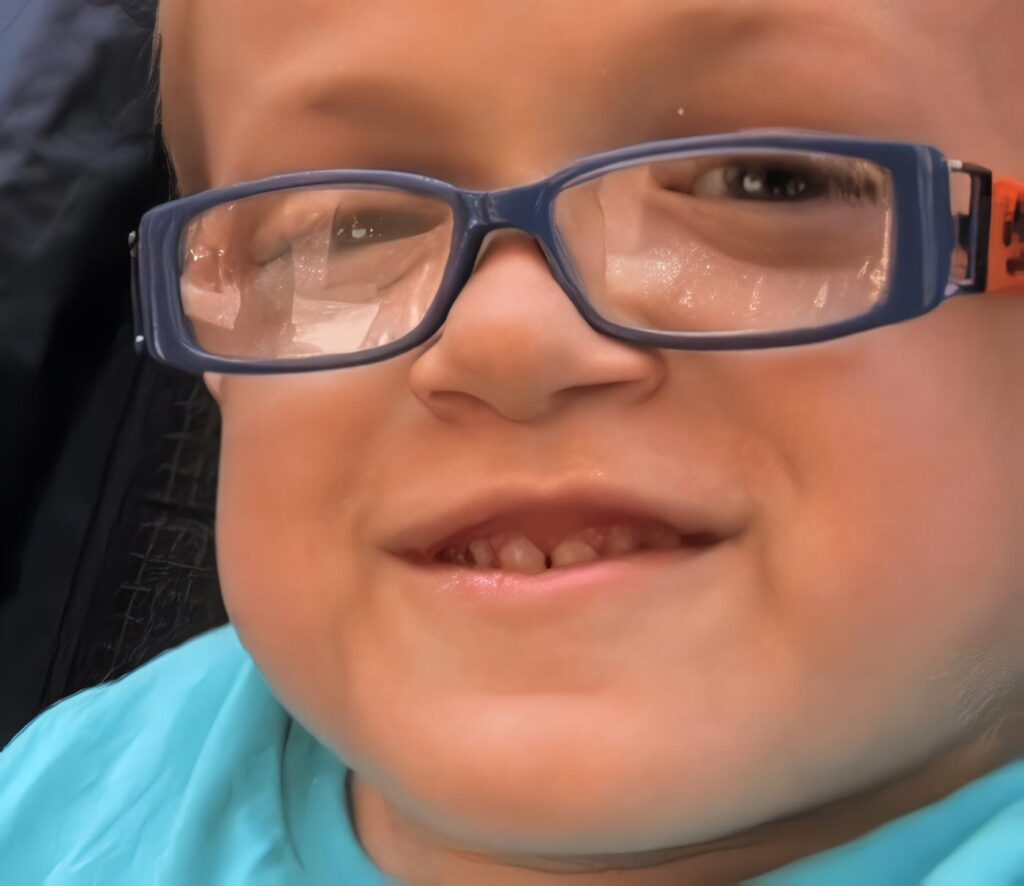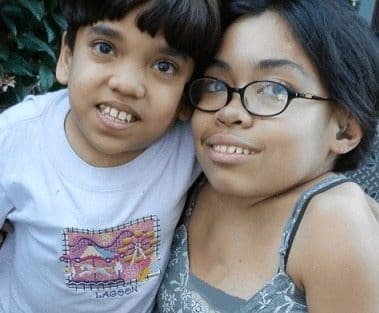CONCLUSIONES Y PERSPECTIVAS
Durante los últimos 30 años se han realizado importantes avances en el diagnóstico y tratamiento para la enfermedad de Morquio A. En la última década, mediante la colaboración con los Drs. Shunji Tomatsu y Adriana M. Montaño, colombiana radicada en la ciudad de Saint Louis (USA), un número importante de investigadores colombianos han participado activamente en la identificación de mutaciones, evaluación de nuevas herramientas diagnósticas, construcción de modelos animales y en el desarrollo de estrategias de terapia génica y de reemplazo enzimático. Sin embargo, aún es necesario profundizar en el conocimiento de las bases moleculares de la enfermedad, el desarrollo e implementación de programas de tamizaje neonatal, el desarrollo de sistemas que permitan evitar el rechazo inmunológico de la proteína recombinante, la producción de la proteína recombinante en otros sistemas de expresión, y el desarrollo de alternativas terapéuticas basadas estrategias de reducción u optimización de sustrato o el uso de chaperonas farmacológicas. En la actualidad estas estrategias se encuentran bajo evaluación, en las cuales investigadores colombianos siguen realizando aportes importantes que permitan seguir avanzando en el conocimiento de esta enfermedad.
AGRADECIMIENTOS
Los autores expresan sus agradecimientos a la Pontificia Universidad Javeriana; la Fundación para la Promoción de la Investigación y la Tecnología del Banco de la República; el Departamento Administrativo de Ciencia, Tecnología e Innovación (Colciencias); y la Fundación Carol Ann (Organización Internacional Morquio) por sus aportes económicos para la realización de los diferentes proyectos de los cuales se derivan estos resultados. Igualmente expresan sus agradecimiento por el apoyo en la construcción de vectores para terapia génica a Felipe Garcia, Mónica Gutierrez, María Andrea Rueda, Rocio Cuaspa y Eric Shelley; en el diagnóstico y estudio de mutaciones a Hugo Vega, Olga Yaneth Echeverri, Susana Vélez, Piedad Sarmiento e Inés Stella Morales; y en la producción de la enzima recombinante en E. coli a Ángela Mosquera, Ángela Espejo, Lina Lizaraso, Alexander Rodríguez y Oscar Sánchez.
REFERENCIAS
1. Tomatsu S, Montaño AM, Oikawa H, Smith M, Barrera L, Chinen Y, et al. Mucopolysaccharidosis type IVA (Morquio A disease): clinical review and current treatment. Curr Pharm Biotechnol. 2011 Jun 1;12(6):931-45.
2. Morquio L. Sur une forme de dystrophie osseuse familiale. Bull Soc Pedat Paris. 1929;27:145-52.
3. Montaño AM, Tomatsu S, Gottesman G, Smith M, Orii T. International Morquio A registry: Clinical manifestation and natural course of Morquio A disease. J Inherit Metab Dis. 2007;30(2):165-74.
4. Mikles M, Stanton R. A review of Morquio syndrome. Am J Orthop. 1997;26(8):533-40.
5. Barrera L, Echeverri O, Espinosa E. Errores Innatos del Metabolismo. In: Correa J, Gómez J, Posada R, editors. Fundamentos de Pediatría. Medellin: Corporación para Investigaciones Biológicas; 2007. p. 356 – 96.
6. Kato Z, Fukuda S, Tomatsu S, Vega H, Yasunaga T, Yamahishi A, et al. A Novel Common Missense Mutation G301C in the N-Acetylgalactosamine-6-sulfate Sulfatase Gene in Mucopolysaccharidosis IVA. Hum Genet 1997;101:97-101.
7. Bernal J, Briceño I. Genetic and other diseases in the pottery of Tumaco-La Tolita culture in Colombia–Ecuador. Clin Genet. 2006;70:188-91.
8. Ashworth JL, Biswas S, Wraith E, Lloyd IC. Mucopolysaccharidoses and the eye. Surv Ophthalmol. 2006 Jan-Feb;51(1):1-17.
9. Tomatsu S, Montaño A, Ohashi A, Oikawa H, Oguma T, Dung V, et al. Enzyme replacement therapy in a murine model of Morquio A syndrome. Hum Mol Genet. 2008;17(6):815-24.
10. Dvorak-Ewell M, Wendt D, Hague C, Christianson T, Koppaka V, Crippen D, et al. Enzyme replacement in a human model of mucopolysaccharidosis IVA in vitro and its biodistribution in the cartilage of wild type mice. PLoS One. [Research Support, Non-U.S. Gov’t]. 2010;5(8):e12194.
11. Tomatsu S, Montaño AM, Dung V, Ohashi A, Oikawa H, Oguma T, et al. Enhacement of drug delivery: Enzyme-replacement therapy for murine Morquio A syndrome. Mol Ther. 2010;18(6):1094-102.
12. Tomatsu S, Montaño A, Gutiérrez M, Grubb J, Oikawa H, Dung V, et al. Characterization and pharmacokinetic study of recombinant human N-acetylgalactosamine- 6-sulfate sulfatase. Mol Genet Metab 2007;91:69-78.
13. Ponder K, Haskins M. Gene therapy for mucopolysaccharidosis. Expert Opin Biol Ther. 2007;7(9):1333-45.
14. Alméciga-Díaz C, Montaño AM, Tomatsu S, Barrera L. Adeno-associated virus gene transfer on Morquio A: effect of promoters and sulfatase-modifying Factor 1. FEBS J. 2010 September 2010;277(17):3608-19.
15. Alméciga-Díaz C, Rueda-Paramo M, Espejo A, Echeverri O, Montaño A, Tomatsu S, et al. Effect of Elongation Factor 1αpromoter and SUMF1 over in-vitro expression of N-acetylgalactosamine- 6-sulfate sulfatase. Mol Biol Rep. 2009 September 2009;36(7):1863-70.
16. Gutierrez M, Garcia-Vallejo F, Tomatsu S, Ceron F, Alméciga-Díaz C, Domínguez M, et al. Construcción de un vector de expresión derivado de virus adenoasociados para corregir in vitro el defecto genético en la enfermedad de Morquio A. Biomedica. 2008;28(3):448-59.
17. Toietta G, Severini G, Traversari C, Tomatsu S, Sukegawa K, Fukuda S, et al. Various cells retrovirally transduced with N-acetylgalactosoamine-6-sulfate sulfatase correct Morquio skin fibroblasts in vitro. Hum Gene Ther. 2001;12(16):2007-16.
18. Nakashima Y, Tomatsu S, Hori T, Fukuda S, Sukegawa K, Kondo N, et al. Mucopolysaccharidosis IV A: Molecular cloning of the human N-acetylgalactosamine- 6-sulfatase gene (GALNS) and analysis of the 5’-flanking region. Genomics. 1994;20:99-104.
19. Tomatsu S, Fukuda M, Masue K, Sukegawa T, Fukao A, Yamagishi T, et al. Morquio disease: isolation, characterization and expression of full-length cDNA for human N-acetylgalactosamine-6-sulfate sulfatase. Biochem Biophys Res Commun. 1991;181:677-83.
20. Tomatsu S, Montaño A, Nishioka T, Gutierrez M, Peña O, Trandafirescu G, et al. Mutation and Polymorphism Spectrum of the GALNS Gene in Mucopolysaccharidosis IVA (Morquio A). Hum Mutat. 2005;26:500-12.
21. Tomatsu S, Filocamo M, Orii KO, Sly WS, Gutierrez MA, Nishioka T, et al. Mucopolysaccharidosis IVA (Morquio A): identification of novel common mutations in the N-acetylgalactosamine-6-sulfate sulfatase (GALNS) gene in Italian patients. Hum Mutat. 2004 Aug;24(2):187-8.
22. Tomatsu S, Dieter T, Schwartz IV, Sarmient P, Giugliani R, Barrera LA, et al. Identification of a common mutation in mucopolysaccharidosis IVA: correlation among genotype, phenotype, and keratan sulfate. J Hum Genet. 2004;49(9):490-4.
23. Masue M, Sukegawa K, Orii T, Hashimoto T. Nacetylgalactosamine- 6-sulfate sulfatase in human placenta: purification and characteristics. J Biochem. 1991 Dec;110(6):965-70.
24. Sukegawa K, Nakamura H, Kato Z, Tomatsu S, Montaño AM, Fukao T, et al. Biochemical and structural analysis of missense mutations in N-acetylgalactosamine- 6-sulfate sulfatase causing mucopolysaccharidosis IVA phenotypes. Hum Mol Genet. 2000 May 22;9(9):1283-90.
25. Kornfeld S. Trafficking of lysosomal enzymes. Faseb J. 1987 Dec;1(6):462-8.
26. Roeser D, Preusser-Kunze A, Scgmidt B, Gasow K, Wittmann J, Dierks T, et al. A general binding mechanism for all human sulfatases by the formylglycine- generating enzyme. Proc Natl Acad Sci USA. 2006;103:81-6.
27. Dierks T, Schmidt B, Borissenko LV, Peng J, Preusser A, Mariappan M, et al. Multiple sulfatase deficiency is caused by mutations in the gene encoding the human C(alpha)-formylglycine generating enzyme. Cell. 2003 May 16;113(4):435-44.
28. Cosma M, Pepe P, Annunziata I, Newbold R, Grompe M, Parenti G, et al. The multiple sulfatase deficiency gene encodes an essential and limiting factor for the activity of sulfatases. Cell. 2003;113(4):445-56.
29. Sly WS, Vogler C, Grubb JH, Levy B, Galvin N, Tan Y, et al. Enzyme therapy in mannose receptor-null mucopolysaccharidosis VII mice defines roles for the mannose 6-phosphate and mannose receptors. Proc Natl Acad Sci U S A. 2006 Oct 10;103(41):15172-7.
30. Neufeld E, Muenzer J. The Mucopolysaccharidoses. In: Scriver C, Beaudet A, Sly W, Valle D, editors. The Metabolic and Molecular Bases of Inherited Diseases. New York: McGraw-Hill; 2001. p. 3421-52.
31. Davison JE, Kearney S, Horton J, Foster K, Peet AC, Hendriksz CJ. Intellectual and neurological functioning in Morquio syndrome (MPS IVa). J Inherit Metab Dis. 2012 Jan 10.
32. Ohashi A, Montaño AM, Colon JE, Oguma T, Luisiri A, Tomatsu S. Sacral dimple: incidental findings from newborn evaluation. Mucopolysaccharidosis IVA disease. Acta Paediatr. [Case Reports Research Support, Non-U.S. Gov’t]. 2009 May;98(5):768-9, 910-2.
33. Kanazawa T, Yasunaga Y, Ikuta Y, Harada A, Kusaka O, Sukegawa K. Femoral head dysplasia in Morquio disease type A. Acta Orthop Scand. 2001;72(1):18-21.
34. Montaño AM, Tomatsu S, Brusius A, Smith M, Orii T. Growth charts for patients affected with Morquio A Disease. Am J Med Genet. 2008;15(10):1286-95.
35. Northover H, Cowie R, Wraith J. Mucopolysaccharidosis type IVA (Morquio syndrome): a clinical review. J Inherit Metab Dis. 1996;19(3):357-65.
36. Piccirilli C, Chadduck W. Cervical kyphotic myelopathy in a child with Morquio syndrome. Child´s Nerv Syst. 1996;12:114-6.
37. Rigante D, Antuzzi D, Ricci R, Segni G. Cervical myelopathy in mucopolysaccharidosis type IV. Clin Neuropathol. 1999;18(2):84-6.
38. Dalvie S, Skinner J, Vellodi A, Noorden MH. Mobile thoracolumbar gibbus in Morquio type A: the cause of paraparesis and its management. J Pediatr Orthop B. 2001 Oct;10(4):328-30.
39. Ransford AO, Crockard HA, Stevens JM, Modaghegh S. Occipito-atlanto-axial fusion in Morquio-Brailsford syndrome. A ten-year experience. J Bone Joint Surg Br. 1996 Mar;78(2):307-13.
40. Rolling I, Clausen N, Nyvad B, Sindet-Pedersen S. Dental Findings in three siblings with Morquio´s syndrome. Int J Paediatr Dent. 1999;9:219-24.
41. Walker PP, Rose E, Williams JG. Upper airways abnormalities and tracheal problems in Morquio’s disease. Thorax. 2003 May;58(5):458-9.
42. Pelley CJ, Kwo J, Hess DR. Tracheomalacia in an adult with respiratory failure and Morquio syndrome. Respir Care. 2007 Mar;52(3):278-82.
43. Pennock CA. A review and selection of simple laboratory methods used for the study of glycosaminoglycan excretion and the diagnosis of the mucopolysaccharidoses. J Clin Pathol. 1976 Feb;29(2):111-23.
44. Mabe P, Valiente A, Soto V, Cornejo V, Raimann E. Evaluation of reliability for urine mucopolysaccharidosis screening by dimethylmethylene blue and Berry
spot tests. Clin Chim Acta. 2004 Jul;345(1-2):135-40.
45. de Jong JG, Wevers RA, Laarakkers C, Poorthuis BJ. Dimethylmethylene blue-based spectrophotometry of glycosaminoglycans in untreated urine: a rapid screening procedure for mucopolysaccharidoses. Clin Chem. 1989 Jul;35(7):1472-7.
46. Tomatsu S, Okamura K, Taketani T, Orii KO, Nishioka T, Gutierrez MA, et al. Development and testing of new screening method for keratan sulfate in mucopolysaccharidosis IVA. Pediatr Res. 2004 Apr;55(4):592-7.
47. van Diggelen O, Zhao H, Kleijer W, Janse H, Poorthuis B, Pelt Jv, et al. A fluorometric enzyme assay for the diagnosis of Morquio disease type A (MPS IVA). Clin Chem Acta. 1990;187(2):131-40.
48. Montaño AM, Sukegawa K, Kato Z, Carrozzo R, Di Natale P, Christensen E, et al. Effect of ‘attenuated’ mutations in mucopolysaccharidosis IVA on molecular phenotypes of N-acetylgalactosamine-6-sulfate sulfatase. J Inherit Metab Dis. 2007 Oct;30(5):758-67.
49. Kleijer WJ, Geilen GC, Garritsen V, Huijmans JG, Los FJ, Voznyi YV, et al. First-trimester diagnosis of Morquio disease type A. Prenat Diagn. 2000 Mar;20(3):183-5.
50. Camelier MV, Burin MG, De MJ, Vieira TA, Marasca G, Giugliani R. Practical and reliable enzyme test for the detection of mucopolysaccharidosis IVA (Morquio Syndrome type A) in dried blood samples. Clinica chimica acta; international journal of clinical chemistry. [Research Support, Non-U.S. Gov’t]. 2011 Sep 18;412(19-20):1805-8.
51. Oguma T, Tomatsu S, Okazaki O. Analytical method for determination of disaccharides derived from keratan sulfates in human serum and plasma by highperformance liquid chromatography/turbo-ionspray ionization tandem mass spectrometry. Biomed Chromatogr. 2007 Apr;21(4):356-62.
52. Martell LA, Cunico RL, Ohh J, Fulkerson W, Furneaux R, Foehr ED. Validation of an LC-MS/MS assay for detecting relevant disaccharides from keratan sulfate as a biomarker for Morquio A syndrome. Bioanalysis. [Research Support, Non-U.S. Gov’t]. 2011 Aug;3(16):1855-66.
53. Hintze JP, Tomatsu S, Fujii T, Montaño AM, Yamaguchi S, Suzuki Y, et al. Comparison of liquid chromatography-tandem mass spectrometry and sandwich ELISA for determination of keratan sulfate in plasma and urine. Biomark Insights. 2011;6:69-78.
54. Parkinson-Lawrence EJ, Muller VJ, Hopwood JJ, Brooks DA. N-acetylgalactosamine-6-sulfatase protein detection in MPS IVA patient and unaffected control samples. Clin Chim Acta. 2007 Feb;377(1-2):88-91.
55. Rodriguez A, Espejo AJ, Hernandez A, Velasquez OL, Lizaraso LM, Cordoba HA, et al. Enzyme replacement therapy for Morquio A: an active recombinant N-acetylgalactosamine-6-sulfate sulfatase produced in Escherichia coli BL21. J Ind Microbiol Biotechnol. 2010 Nov;37(11):1193-201.
56. Ellinwood M, Vite C, Haskins M. Gene therapy for lysosomal storage diseases: the lessons and promise of animal models. J Gene Med. 2004;6:481-506.
57. Montaño AM, Yamagishi A, Tomatsu S, Fukuda S, Copeland NG, Orii KE, et al. The mouse N-acetylgalactosamine- 6-sulfate sulfatase (Galns) gene: cDNA
isolation, genomic characterization, chromosomal assignment and analysis of the 5’-flanking region. Biochim Biophys Acta. 2000 Mar 17;1500(3):323-34.
58. Tomatsu S, Orii K, Vogler C, Nakayama J, Levy B, Grubb J, et al. Mouse model of N-acetylgalactosamine- 6-sulfate sulfatase deficiency (Galns-/-) produced by targeted disruption of the gene defective in Morquio A disease. Hum Mol Genet. 2003;12:3349-58.
59. Tomatsu S, Gutierrez M, Nishioka T, Yamada M, Tosaka Y, Grubb J, et al. Development of MPS IVA mouse (Galnstm(hC79S.mC76S)slu) tolerant to human N-acetylgalactosamine-6-sulfate sulfatase. Hum Mol Genet. 2005;14:3321-35.
60. Tomatsu S, Vogler C, Montaño A, Gutierrez M, Oikawa H, Dung V, et al. Murine model (Galns(tm(C76S)slu)) of MPS IVA with missense mutation at the active site cysteine conserved among sulfatase proteins. Mol Genet Metab. 2007;91(3):251-8.
61. Venn G, Mason RM. Absence of keratan sulphate from skeletal tissues of mouse and rat. Biochem J. 1985 Jun 1;228(2):443-50.
62. de Waal Malefijt MC, van Kampen A, van Gemund JJ. Total knee arthroplasty in patients with inherited dwarfism–a report of five knee replacements in two patients with Morquio’s disease type A and one with spondylo-epiphyseal dysplasia. Arch Orthop Trauma Surg. 2000;120(3-4):179-82.
63. Morgan K, Reahman M, Schwartz R. Morquio’s syndrome and its anaesthetic considerations. Paediatr Anaesth. 2002;12:641-4.
64. Lange MC, Teive HA, Troiano AR, Bitencourt M, Funke VA, Setubal DC, et al. Bone marrow transplantation in patients with storage diseases: a developing country experience. Arq Neuropsiquiatr. 2006 Mar;64(1):1-4.
65. Lim-Melia ER, Kronn DF. Current enzyme replacement therapy for the treatment of lysosomal storage diseases. Pediatr Ann. 2009 Aug;38(8):448-55.
66. Valayannopoulos V, Wijburg FA. Therapy for the mucopolysaccharidoses. Rheumatology. 2011 Dec;50 Suppl 5:v49-v59.
67. Landgrebe J, Dierks T, Schamidt B, Figura Kv. The human SUMF1 gene, required for posttranslational sulfatase modification, defines a new gene family which is conserved from pro- to eukaryotes. Gene. 2003;316:47-56.
68. Alméciga-Díaz C, Mosquera A, Leonardi F, Soto C, Rodríguez A, Lizaraso L, et al. Production and characterization of a recombinant N-acetylgalactosamine- 6-sulfate sulfatase produced in E. coli BL21. Mol Gen Metab. 2011;102:S5.
69. American Society of Gene and Cell Therapy. 2007 [cited 2012 Enero 11 2012]; Available from: https://www.asgt.org.
70. Cheng S, Smith A. Gene therapy progress and prospects: gene therapy of lysosomal storage disorders. Gene Ther. 2003;10:1275-81.
71. Hodges BL, Cheng SH. Cell and Gene-Based Therapies for the Lysosomal Storage Diseases. Curr Gen Ther. 2006;6:227-41.
72. Sferra T, Backstrom K, Wang C, Rennard R, Miller M, Hu Y. Widespread Correction of Lysosomal Storage Following Intrahepatic Injection of a Recombinant Adeno-associated Virus in the Adult MPS VII Mouse. Mol Ther. 2004;10(3):478-91.
73. Mango RL, Xu L, Sands MS, Vogler C, Seiler G, Schwarz T, et al. Neonatal retroviral vector-mediated hepatic gene therapy reduces bone, joint, and cartilage disease in mucopolysaccharidosis VII mice and dogs. Mol Genet Metab. 2004;82:4-19.
74. Fraldi A, Biffi A, Lombarda A, Visigalli I, Pepe S, Setiembre C, et al. SUMF1 enhances sulfatase activities in vivo in five sulfatase deficiencies. Biochem J. 2007;403(2):305-12.
75. Fraldi A, Hemsley H, Crawley A, Lombardi A, Lau A, Sutherland L, et al. Functional correction of CNS lesions in MPS-IIIA mouse model by intracerebral AAV-mediated delivery of sulfamidase and SUMF1 genes. Hum Mol Genet. 2007;16(22):2693-702.
76. Seregin SS, Amalfitano A. Gene therapy for lysosomal storage diseases: progress, challenges and future prospects. Curr Pharm Des. [Research Support, N.I.H., Extramural Research Support, Non-U.S. Gov’t]. 2011;17(24):2558-74.
77. Alméciga-Díaz C, Saénz H, Barrera L. Estado actual, consideraciones éticas y perspectivas de la terapia génica en errores innatos del metabolismo. Rev Acad Colomb Cienc. 2006;30(117):525-40.
78. Alexander I, Cunningham S, Logan G, Cristodoulou J. Potential of AAV vectors in the treatment of metabolic disease. Gene Ther. 2008;15(11):831-9.
79. Wu Z, Asokan A, Samulski R. Adeno-associated virus serotypes: vector toolkit for human gene therapy. Mol Ther. 2006 September 2006;14(3):316-27.
80. Carter B. Adeno-Associated Virus Vectors in Clinical Trials. Hum Gene Ther. 2005;16(5):541-50.
81. Papadakis E, Nicklin S, Baker A, White S. Promoters and control elements: Designing expression cassettes for gene therapy. Curr Gene Ther. 2004;4(1):89-113.
82. Qin L, Ding Y, Pahud DR, Chang E, Imperiale MJ, Bromberg JS. Promoter attenuation in gene therapy: interferon-gamma and tumor necrosis factor-alpha inhibit transgene expression. Hum Gene Ther. 1997 Nov 20;8(17):2019-29.
83. Prosch S, Stein J, Staak K, Liebenthal C, Volk HD, Kruger DH. Inactivation of the very strong HCMV immediate early promoter by DNA CpG methylation in vitro. Biol Chem Hoppe Seyler. 1996 Mar;377(3):195- 201.
84. Collas P. Modulation of plasmid DNA methylation and expression in Zebrafish embryons. Nucleic Acids Res. 1998;26(19):4454-61.
85. Brooks A, Harkins R, Wang P, Qian H, Liu P, Rubanyi G. Transcriptional silencing is associated with extensive methylation of the CMV promotor following adenoviral gene delivery to muscle. J Gene Med. 2004;6(4):395-404.
86. Toniatti C, Bujard H, Cortese R, Ciliberto C. Gene therapy progress and prospects: transcription regulatory systems. Gene Ther. 2004;11(8):649-57.
87. Kim I, Józkowicz A, Piedra P. Lifetime correction of genetic deficiency in mice with a single injection of helper-dependent adenoviral vector. Proc Natl Acad Sci USA. 2001;98(23):13282-7.
88. Alméciga-Díaz C. Estudio del efecto de tres promotores y de la enzima activadora de sulfatasas, en una estrategia de terapia génica para la mucopolisacaridosis IVA. Bogotá D.C.: Pontificia Universidad Javeriana; 2009.
89. Masuya K, Teno N. Small molecules for bone diseases. Expert Opin Ther Pat. 2010 Apr;20(4):563-82.
90. Fujisaki J, Tokunaga Y, Takahashi T, Shimojo F, Kimura S, Hata T. Osteotropic drug delivery system (ODDS) based on bisphosphonic prodrug. I.v. effects of osteotropic estradiol on bone mineral density and uterine weight in ovariectomized rats. J Drug Target. 1998;5(2):129-38.
91. Shi W, Arnold G, Bartlett J. Insertional Mutagenesis of the Adeno-Associated Virus Type 2 (AAV2) Capsid Gene and Generation of AAV2 Vectors Targeted to Alternative Cell-Surface Receptors. Hum Gene Ther. 2001 September 2001;12:1697-711.
92. Wu P, Xiao W, Conlon T, Hughes J, Agbandje-McKenna M, Ferkol T, et al. Mutational Analysis of the Adeno- Associated Virus Type 2 (AAV2) Capsid Gene and Construction of AAV2 Vectors with Altered Tropism. J Virol. 2000 September 2000;74(18):8635-47.
93. Alméciga-Díaz C, Cuaspa R, Barrera L. Gene Delivery Systems: Tailoring Vectors to reach specific tissues. In: Yuan X, editor. Non-viral Gene Therapy. Rijeka, Croatia: InTech; 2011. p. 51-76.
94. Tomatsu S, Montaño AM, Alméciga-Díaz C, Barrera L, inventors; Saint Louis University, assignee. Delivery of therapeutic agents to the bone. USA patent US20100008979. 2010 January 14, 2010.
Fecha de recibido: Junio 21 de 2011
Fecha de aprobado: Junio 30 de 2012
Dirección para correspondencia:
Carlos Javier Alméciga Díaz
e-mail: cjalmeciga@javeriana.edu.co
Luis Alejandro Barrera
e-mail: abarrera@javeriana.edu.co





